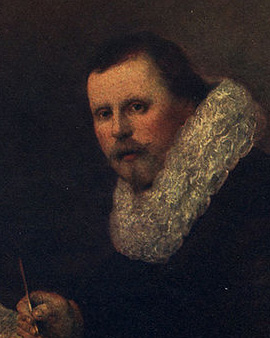The history of art in Australia ranges from the creatively impressive prehistoric testimonies of the Aboriginal people of about 40,000 years ago and their tree bark and rock paintings and stone carvings to the strongly influenced by European Modernism, but still clearly Australian painting of the Impressionist-oriented "Heidelberg School" in the late 19th century. This includes the Impressionist-oriented Heidelberg School in the late 19th century, the more recent indigenous styles of the Hermannsburg School in the 1930s and the Western Desert Art Movement in the 1970s, as well as the diverse contemporary Australian art. Internationally renowned and successful painters, designers, photographers, sculptors and draughtsmen such as Ken Done, Rolf Harris, Ricky Swallow as well as Patricia Piccinini and Susan Norrie are also to be mentioned here. The representatives of "Contemporary Indigenous Australian art", some of whom have received several art awards, such as Clifford Possum Tjapaltjarri, Kaapa Tjampitjinpa, Linda Syddick Napaltjarri, John Mawurndjul and Jenni Kemarre Martiniello also enjoy a good reputation today.
While these and many other contemporary Australian artists are able to make a living in their home country, which is far from the rest of the world, thanks to modern information and communication technologies and transport links, this was much more difficult for their predecessors throughout the 19th and even early 20th centuries. The art from "Down Under", at that time viewed with much scepticism on the part of Europeans towards the notorious British penal colony, was accepted as such almost exclusively in the form of illustrations of exotic Australian fauna and flora. Pictures, paintings and drawings of Ferdinand Bauer, Charles Alexandre Lesueur, John William Lewin, Benjamin Duterrau, Robert Hawker Dowling, John Glover and Conrad Martens thus circulated almost exclusively in Australia itself, and even the first galleries and museums, such as the "National Gallery of Victoria" in Melbourne in 1861, were not created until the middle of the 19th century. However, this international isolation slowly came to an end from the 1880s and 1890s onwards, and artists such as Arthur Streeton, Frederick McCubbin and Tom Roberts were also increasingly honoured overseas for skilful depictions of the typical colours, landscapes and lighting conditions of Australia.
Another of the first Australian artists to be successful abroad was the painter, author, printmaker and illustrator Mortimer Luddington Menpes, who was born and raised in Port Adelaide, but whose career actually took its course in Great Britain and not in Australia. After his family had moved back to England in 1875, he began his art education in 1878 at the School of Art in London and exhibited for the first time in 1880 at the Royal Academy. Inspired by a sketch tour of Brittany and influenced by Japanese designs, Menpes became a major figure in the renaissance of etching and produced more than 700 etchings, usually printed by himself. During the Boer War in South Africa from 1900 onwards, he worked as an illustrator and subsequently undertook extensive travels to Burma, Egypt, France, India, Italy, Japan, Kashmir, Mexico, Morocco and Spain. Menpes made a good living from printing his drawn impressions of foreign countries, but was also known for his skilful oil paintings and watercolours. He also devoted himself to the professional cultivation of carnations and founded two printing works in London and Watford to produce colour illustrated books using the Hentschel colour type process, which was new at the time.
×





.jpg)
.jpg)
.jpg)
.jpg)
_-_(MeisterDrucke-1497035).jpg)
_-_(MeisterDrucke-1497035).jpg)
_-_(MeisterDrucke-1497023).jpg)
_-_(MeisterDrucke-1497023).jpg)
_-_(MeisterDrucke-1499624).jpg)
_-_(MeisterDrucke-1499624).jpg)
.jpg)
.jpg)
_-_(MeisterDrucke-1485923).jpg)
_-_(MeisterDrucke-1485923).jpg)
_-_(MeisterDrucke-1485874).jpg)
_-_(MeisterDrucke-1485874).jpg)
.jpg)
.jpg)
.jpg)
.jpg)
_-_(MeisterDrucke-1499597).jpg)
_-_(MeisterDrucke-1499597).jpg)
_-_(MeisterDrucke-1500654).jpg)
_-_(MeisterDrucke-1500654).jpg)
.jpg)
.jpg)
_-_(MeisterDrucke-1496999).jpg)
_-_(MeisterDrucke-1496999).jpg)
.jpg)
.jpg)
.jpg)
.jpg)
.jpg)
.jpg)
.jpg)
.jpg)
_-_(MeisterDrucke-1504946).jpg)
_-_(MeisterDrucke-1504946).jpg)
.jpg)
.jpg)
.jpg)
.jpg)
.jpg)
.jpg)
.jpg)
.jpg)
.jpg)
.jpg)
.jpg)
.jpg)
.jpg)
.jpg)
_-_(MeisterDrucke-1485851).jpg)
_-_(MeisterDrucke-1485851).jpg)
_-_(MeisterDrucke-1494079).jpg)
_-_(MeisterDrucke-1494079).jpg)
.jpg)
.jpg)
.jpg)
.jpg)
.jpg)
.jpg)
.jpg)
.jpg)
.jpg)
.jpg)
.jpg)
.jpg)
.jpg)
.jpg)
_-_(MeisterDrucke-1494067).jpg)
_-_(MeisterDrucke-1494067).jpg)
.jpg)
.jpg)
_-_(MeisterDrucke-1497028).jpg)
_-_(MeisterDrucke-1497028).jpg)
.jpg)
.jpg)
.jpg)
.jpg)
.jpg)
.jpg)
.jpg)
.jpg)
.jpg)
.jpg)
_-_(MeisterDrucke-1497033).jpg)
_-_(MeisterDrucke-1497033).jpg)
.jpg)
.jpg)
.jpg)
.jpg)
.jpg)
.jpg)
.jpg)
.jpg)
.jpg)
.jpg)
.jpg)
.jpg)
.jpg)
.jpg)
_-_(MeisterDrucke-1485920).jpg)
_-_(MeisterDrucke-1485920).jpg)
_-_(MeisterDrucke-1494076).jpg)
_-_(MeisterDrucke-1494076).jpg)
.jpg)
.jpg)
_-_(MeisterDrucke-1494128).jpg)
_-_(MeisterDrucke-1494128).jpg)
_-_(MeisterDrucke-944690).jpg)
_-_(MeisterDrucke-944690).jpg)
.jpg)
.jpg)
.jpg)
.jpg)
_-_(MeisterDrucke-1496259).jpg)
_-_(MeisterDrucke-1496259).jpg)
.jpg)
.jpg)
.jpg)
.jpg)
_-_(MeisterDrucke-1485871).jpg)
_-_(MeisterDrucke-1485871).jpg)
.jpg)
.jpg)
.jpg)
.jpg)
.jpg)
.jpg)
.jpg)
.jpg)
.jpg)
.jpg)
.jpg)
.jpg)
_-_(MeisterDrucke-1499554).jpg)
_-_(MeisterDrucke-1499554).jpg)
.jpg)
.jpg)
.jpg)
.jpg)
_-_(MeisterDrucke-1497000).jpg)
_-_(MeisterDrucke-1497000).jpg)
.jpg)
.jpg)
.jpg)
.jpg)
.jpg)
.jpg)
.jpg)
.jpg)
.jpg)
.jpg)
_-_(MeisterDrucke-1485847).jpg)
_-_(MeisterDrucke-1485847).jpg)
_-_(MeisterDrucke-1511012).jpg)
_-_(MeisterDrucke-1511012).jpg)
.jpg)
.jpg)
.jpg)
.jpg)
_-_(MeisterDrucke-1506637).jpg)
_-_(MeisterDrucke-1506637).jpg)
.jpg)
.jpg)
.jpg)
.jpg)
.jpg)
.jpg)
.jpg)
.jpg)
.jpg)
.jpg)
.jpg)
.jpg)
_-_(MeisterDrucke-1494129).jpg)
_-_(MeisterDrucke-1494129).jpg)
.jpg)
.jpg)
_-_(MeisterDrucke-987843).jpg)
_-_(MeisterDrucke-987843).jpg)
.jpg)
.jpg)
_-_(MeisterDrucke-1510544).jpg)
_-_(MeisterDrucke-1510544).jpg)
.jpg)
.jpg)
.jpg)
.jpg)
.jpg)
.jpg)
.jpg)
.jpg)
_-_(MeisterDrucke-1494078).jpg)
_-_(MeisterDrucke-1494078).jpg)
.jpg)
.jpg)
_-_(MeisterDrucke-1494072).jpg)
_-_(MeisterDrucke-1494072).jpg)






